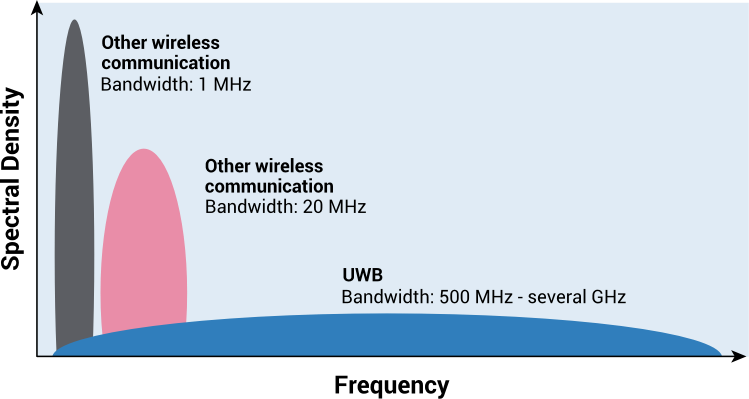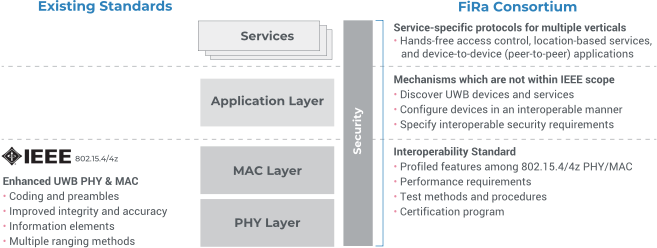|
1785 views|0 replies
alan000345
Currently offline
|
The OP
Published on 2022-3-19 20:49
Only look at the author
This post is from RF/Wirelessly
| |
|
|
||
- 【Posts】Do you know the UWB Promotion Organization? How do they introduce UWB?
- 【Posts】This article will show you what UWB triangulation positioning, TDoA and PDoA positioning are
- 【Posts】UWB Background Information (Part 1)
- 【Posts】Let's take a look at how UWB compares to other standards
- 【Posts】Comparison of UWB positioning technologies: TOF & TDOA
- 【Posts】I plan to share some UWB technology. Can you give me some suggestions?
- 【Posts】Why is UWB indoor positioning, which is mainly aimed at shopping malls and underground garages, not being utilized?
- 【Posts】What is UWB technology? Several major mobile phone manufacturers are planning to develop this business
- 【Download】UWB base station VDU2501 (based on DW1000, can achieve 10cm high-precision indoor positioning) instructions and internal PCBA board introduction
- 【Download】Introduction to UWB Ultra-Wideband Technology
- 【Download】This article mainly introduces the characteristics of ultra-wideband (UWB)
- 【Download】:Firstly, the transmission and receiving model of DS--UWB system is introduced
- 【Download】UWB matlab simulation source code
- 【Download】OFDM and UWB simulation program based on simulink
- 【Download】YDT 2237-2011 Ultra-wideband (UWB) equipment technical requirements and test methods
- 【Download】Ultra-wideband (UWB) wireless transmission technology training
- 【Design】UWB positioning driving car
- 【Design】UWB Base Station Module
- 【Design】#The 4th LiChuang Competition# Indoor positioning demonstration system based on UWB
- 【Design】Trimension? SR040 UWB module with built-in antenna: ASMOP1CO0A1
- 【Design】Trimension? SR040 UWB module with built-in RF connector: ASMOP1CO0R1
- 【Design】Trimension? UWB Development Kit
- 【Articles】Introduction to Ultra-Wideband (UWB) Wireless Communication Technology
- 【Articles】Introduction to UWB Technology Application
- 【Articles】UWB is a new way to use it in cars. Can wireless BMS also use it?
- 【Articles】Car key in the left hand, liveness detection radar in the right hand, UWB is imperative for cars!
- 【Articles】UWB digital keys are starting to become popular on 200,000 yuan cars
- 【Articles】Audi Integrates NXP's Advanced Trimension UWB Portfolio
-
UWB positioning principle diagram and text explanation, telling you how UWB ultra-wideband achieves indoor positioning
Firstofall,UWBisshortforUltraWideBand,whichisacarrier-freecommunicationtechnologyTheFederalCommunicationsCommission(FCC)oftheUnitedStatesstipulatesthattherelativebandwidthoftheUWBsignal(itheratioofthesignalbandwidthtothecenterfrequency)isno ...
-
UWB positioning principle diagram and text explanation, telling you how UWB ultra-wideband achieves indoor positioning
Firstofall,UWBisshortforUltraWideBand,whichisacarrier-freecommunicationtechnologyTheFederalCommunicationsCommission(FCC)oftheUnitedStatesstipulatesthattherelativebandwidthoftheUWBsignal(itheratioofthesignalbandwidthtothecenterfrequency)isno ...
-
Is there a common anode digital tube with the same package as ARK SR420361K?
Iwouldliketoasktheexperts,isthereacommonanodedigitaltubewiththesamepackageasARKSR420361K?Thankyou
- Bluetooth module parameters - transmit power, receive sensitivity, air rate, what equipment can be used to test these parameters more accurately...
- The headlight step-down chip already has a DIM enable terminal to control the on and off of the headlights, so why add a circuit to control the BAT+ supply...
- 74LS series digital integrated circuit data PDF local high-speed download
- [NXP Rapid IoT Review] + Mobile Synchronizer 4
- Proteus 8.12 SP0 (Build 30713) is officially released!
- Goodbye 2019, hello 2020, live up to your youth
- USB Circuit Protection Design Solution
EEWorld Datasheet Technical Support
-
"Cross-chip" quantum entanglement helps build more powerful quantum computing capabilities
IBM scientists have achieved "cross-chip" quantum entanglement - successfully entangled two "Eagl
-
Ultrasound patch can continuously and noninvasively monitor blood pressure
A research team at the University of California, San Diego, has developed an innovative wearable
-
Europe's three largest chip giants re-examine their supply chains
At the Electronica 2024 CEO Roundtable held just last week, the CEOs of three chip giants, Infine
- It is reported that Kioxia will be approved for listing as early as tomorrow, and its market value is expected to reach 750 billion yen
- The US government finalizes a $1.5 billion CHIPS Act subsidy to GlobalFoundries to support the latter's expansion of production capacity in the US
- SK Hynix announces mass production of the world's highest 321-layer 1Tb TLC 4D NAND flash memory, plans to ship it in the first half of 2025
- UWB is a new way to use it in cars. Can wireless BMS also use it?
- Filling the domestic gap! China Mobile, Huawei and others jointly released the first GSE DPU chip
- Samsung Electronics NRD-K Semiconductor R&D Complex to import ASML High NA EUV lithography equipment
- Apple reveals the secret of its own chip success: competitors can't use the latest cutting-edge technology
- Problems with STM32 and passive buzzer playing sound
- Embedded Tutorial_DSP Technology_DSP Experiment Box Operation Tutorial: 2-28 Building a Lightweight WEB Server Experiment
- OPA847IDBVR op amp domestic replacement
- AG32VF407 Test UART
- [Digi-Key Follow Me Issue 2] Chapter 1: Sharing on receiving the goods
- What model is this infrared receiver? Which model can be used instead? Thank you
- Selling brand new unopened ZYNQ 7Z020 FPGA core board
- The LORA module used in the lithium battery-powered water meter setting can save energy when 100 water meters are installed in one corridor.
- I would like to ask, when a port is set to RX0, is it necessary to set the input and output direction of this port?
- Why is this year so difficult? It’s even more difficult than during the pandemic. I’m 30 and facing unemployment. I’m so confused.
- Ask about the voltage regulator test question
- [Xiaohua HC32F448 Review] About Xiaohua Semiconductor's UART interrupt sending and PRINTF construction and redirection
- 【BIGTREETECH PI development board】 HDMI output test
- 【BIGTREETECH PI development board】+08. Audio test (zmj)
- [Xiaohua HC32F448 Review] +RTC electronic clock




 提升卡
提升卡 变色卡
变色卡 千斤顶
千斤顶